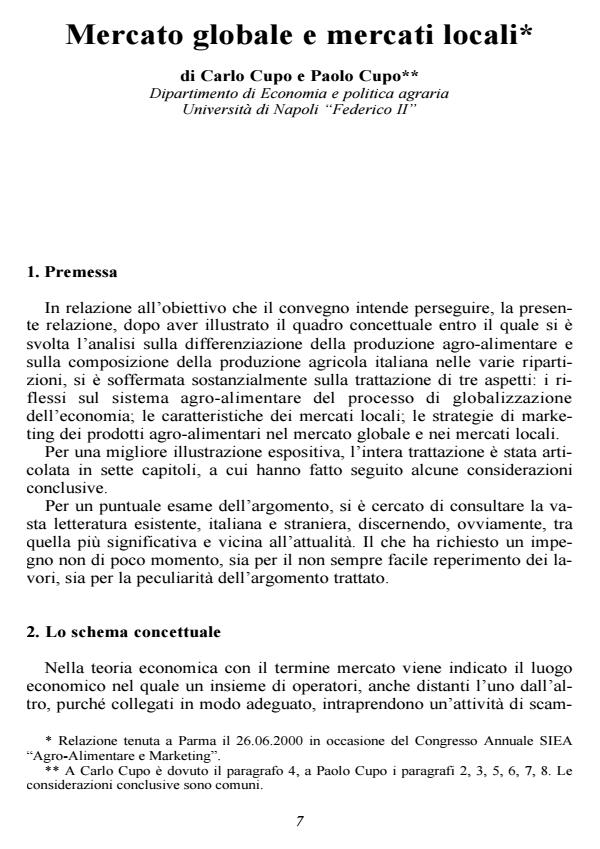Mercato globale e mercati locali
Journal title ECONOMIA AGRO-ALIMENTARE
Author/s Carlo Cupo, Paolo Cupo
Publishing Year 1 Issue 2000/2
Language Italian Pages 41 P. File size 100 KB
DOI
DOI is like a bar code for intellectual property: to have more infomation
click here
Below, you can see the article first page
If you want to buy this article in PDF format, you can do it, following the instructions to buy download credits

FrancoAngeli is member of Publishers International Linking Association, Inc (PILA), a not-for-profit association which run the CrossRef service enabling links to and from online scholarly content.
The relation has focused on three main aspects: the effects of the globalisation in the agro-food system; the characteristics of the local markets; the marketing strategies of the agro-food products in the local and global markets. The globalisation represents a serious threat for the survival of the Italian typical products. In fact the necessity to produce goods much more homogeneous with respect to the reference market may induce to the adoption of technological innovations and of product innovations which, originated in different contexts, create the market and productive conditions for the progressive substitution of the process and typical products. Moreover, also from the demand side, the prospective for the typical products do not appear to be so favourable, given the preferences of the young generations toward the goods which represent the emblems of the food homogeneity process. With the economic development, the food needs are losers in the competition with other needs which arise as a result of the economic development. The consumers seem to be much more willing to pay higher prices for extra-food products, so that for the agro-food sector the price sensitivity is more evident than in other sector. The price sensitivity is also favourite by the asymmetric information existing from the demand side concerning the intrinsic quality of the products. The consequences are the implementation of two different marketing strategies for the two main products: the low price for the mass products and the other tools of the marketing mix for the typical products. This means that for the latter products, which are strictly linked with the territory of origin, an approach based on geographical marketing may result effective for reaching the objective. Given the localisation on the national territory of the two different group of products, mass products mainly in the North and the other products mainly in the South, the two different strategies are coherent with the economic and social objectives of the agricultural policy. In fact, in the areas where there are job opportunities for the agricultural labour, the political measures that facilitate a structural adjustment in agriculture in order to reduce the cost of production - which are necessary to pursue a marketing strategy based on low price - which imply the reduction of demand labour, can be absorbed by the local economy. Instead, in the areas where the rest of the economy is not capable to demand labour, then the marketing based on tools different from the price is coherent with the various roles (social and environmental) played by the local agriculture.
Carlo Cupo, Paolo Cupo, Mercato globale e mercati locali in "ECONOMIA AGRO-ALIMENTARE" 2/2000, pp , DOI: